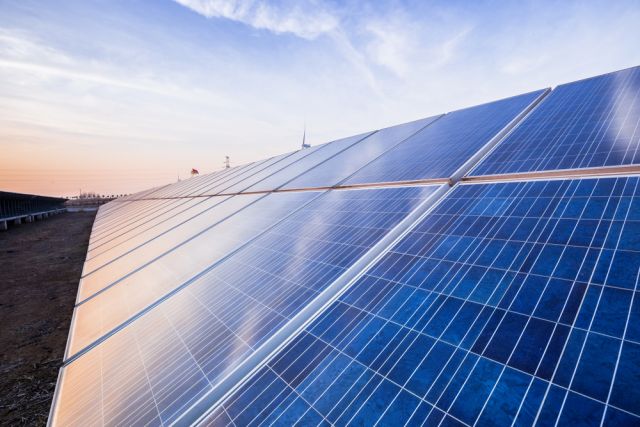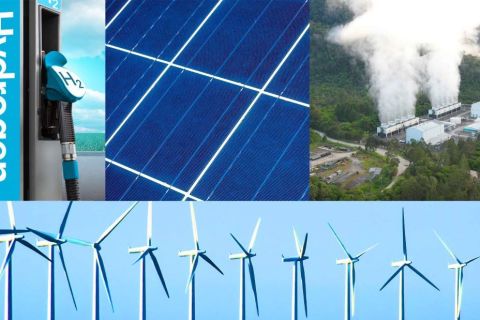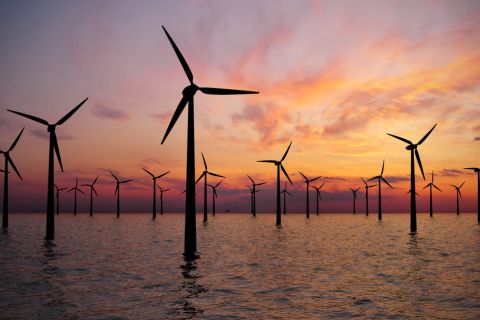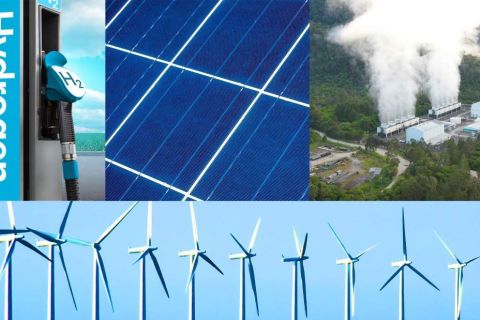
Since the IRA was signed into law in 2022, several international solar PV makers have announced plans to build facilities in the U.S. (Source: Shutterstock)
Editor's note: This article was updated to include comments from Sunil Rathi, Waaree Energies' interim CEO and board member.
India-based Waaree Energies said it plans invest up to about $1 billion to build a 3-gigawatt (GW) solar PV module manufacturing facility west of Houston, with room to expand to 5 GW within four years.
Located in Brookshire, Texas, the facility is expected to begin producing modules by the end of 2024. The company aims to start up an integrated solar cell facility by 2025.
Word of the plans, announced early Dec. 21, were delivered as the solar sector continued a growth streak supercharged by tax incentives included in the Inflation Reduction Act (IRA). Since the IRA was signed into law in 2022, several international solar PV makers have announced plans to build facilities in the U.S. as the nation strengthens domestic supplies to reduce reliance on China.
Manufacturers opting to develop solar parts in the U.S. can pursue the advanced manufacturing production tax credit (45X) for PV modules and its subcomponents as well as inverters, tracking systems and other components.
Manufacturers are also eligible for the advanced energy project investment tax credit (48C ITC), which provides a tax credit for purchasing and commissioning property to build a manufacturing or industrial facility.
Waaree is focused on production-linked incentives, specifically the 45X, Sunil Rathi, interim CEO and board member for Waaree Solar Americas Inc., told Hart Energy. “It definitely makes it more lucrative. But in addition to that, we see there’s a huge demand in the U.S. market,” Rathi said, adding the credit will help the company with employee compensation. “We also believe Made in the U.S. going forward. Demand for Made in the U.S. is going to [rise].”
Waaree said its facility will create more than 1,500 jobs in the U.S. Rathi pointed out that the Houston area site was primarily selected because of the local workforce and work culture.
The company has rented space in Brookshire spanning about 5.6 million sq ft and work has begun to develop the facility. The site will be “cell agnostic,” Rathi said, meaning Waaree will be able to manufacture modules based on customers’ requirements.
“Most major components used in the manufacturing of these solar modules will be sourced domestically, enabled in part by the Inflation Reduction Act,” Rathi said in a press release. “By setting up the new facility in the Houston area, Waaree brings critical technologies that will boost American solar production, reducing reliance on overseas sources while supporting strong U.S. jobs. We are committed to the U.S. and its growing demand for clean energy.”
Waaree said it has already locked in a long-term supply agreement with renewable energy developer SB Energy. The company will supply modules from the Brookshire facility for five years as part of the agreement.
California-headquartered SB Energy has a project pipeline of more than 5 GW of solar energy projects and 10 gigawatt-hours of storage projects, the company said on its website. These include the Orion I, II and III projects under construction in Milam County, Texas, and two projects under construction in California.
“Waaree brings a proven track record of delivering superior technology to some of the largest solar projects in the U.S. and India,” SB Energy co-CEO Abhijeet Sathe said.
With about 12 GW of capacity, Waaree is the biggest solar PV manufacturer in India. The company has been growing its presence in the U.S. as the nation targets a decarbonized electricity system by 2035 and net-zero emissions by 2050. So far, Waaree has delivered more than 4 GW of solar modules to U.S. customers.
In November, the company said it reached an agreement to supply Spain’s Acciona Energia with N type TOPCON modules for projects the renewable energy company plans to develop in the U.S. from 2024 to 2026.
The U.S. is seen as an attractive market for solar development as production capacity soars.
Data released recently by the Solar Energy Industries Association and Wood Mackenzie showed the solar sector added 6.5 GW of new electric generating capacity during third-quarter 2023, up 35% from a year earlier. The report forecast the sector would see 55% growth by the end of 2023 with growth expected to slow to 10% in 2024 due in part to interconnection constraints.
Recommended Reading
Energy Transition in Motion (Week of March 8, 2024)
2024-03-08 - Here is a look at some of this week’s renewable energy news, including a record-setting 2023 for U.S. solar.
Energy Transition in Motion (Week of Feb. 23, 2024)
2024-02-23 - Here is a look at some of this week’s renewable energy news, including approval of the construction and operations plan for Empire Wind offshore New York.
Energy Transition in Motion (Week of April 26, 2024)
2024-04-26 - Here is a look at some of this week’s renewable energy news, including the close of a $1.4 billion decarbonization-focused investment fund.
Equinor, Ørsted/Eversource Land New York Offshore Wind Awards
2024-02-29 - RWE Renewables and National Grid’s Community Offshore Wind 2 project was waitlisted and may be considered for award and contract negotiations later, NYSERDA says.
Energy Transition in Motion (Week of Feb. 16, 2024)
2024-02-16 - Here is a look at some of this week’s renewable energy news, including the outlook for solar and battery storage in the U.S.





